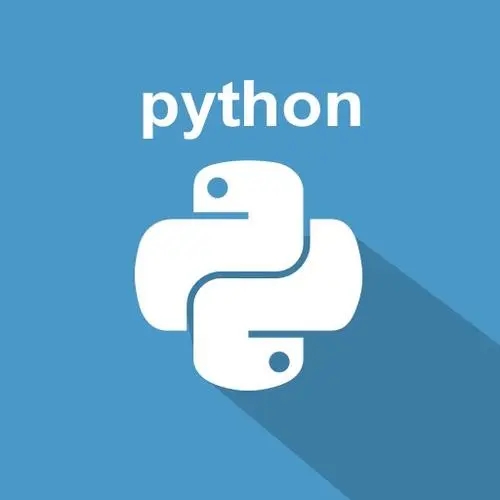本文给大家汇总介绍了python中的5种内建数据结构以及操作示例,非常的详细,有需要的小伙伴可以参考下。
一、列表(List)
list 是一个可以在其中存储一系列项目的数据结构。list 的项目之间需用逗号分开,并用一对中括号括将所有的项目括起来,以表明这是一个 list 。下例用以展示 list 的一些基本操作:
1 2 3 4 5 6 7 8 9 10 11 12 13 14 15 16 |
|
输出结果为:
class have 3 students
The 3rd student in class is Tracy
These students are : Bob Paul Tracy
立即学习“Python免费学习笔记(深入)”;
关于上面的代码有几点要注意的是:
可以往 class_list 中加入任何类型的对象,也就是说,并不要求一个 list 中的项目具有相同类型。你甚至可以往 class_list 中插入一个list。
排序函数作用于本身, 而不是返回一个副本,这与字符串类型是不同的,因为字符串不可修改。
print 函数的end关键字参数用来指定输入完成之后的输出,默认是换行符,上面的代码用空格符替代换行符。
二、元组(Tuple)
tuple 在用法与概念上与 list 没有多大差别,可以将 tuple 看做是一个只读版list。也就是说tuple一经定义便不能被修改——不能添加和删除对象,也不能修改tuple中的对象。
tuple中的项同样应该用逗号分开,并用圆括号将这些项目括起来以表是是一个tuple。这个圆括号是可选的,也就是说可以用以下两种方式定义一个tuple:
t = 'Adam', 'Lisa', 'Bart'
t = ('Adam', 'Lisa', 'Bart')
不过省掉那对圆括号不见得是什么好的习惯。另外当tuple只有一个项时,第一项之后必须有一个逗号,该情况下应该这样定义t = ('Adam',)。这似乎是一个古怪的约束,但是假如没有这个逗号,不带括号定义的tuple就变成了t = 'Adam'这明显具有二义性。
三、字典(Dictionary)
字典可以看做是一组键-值(key-value)对的集合。键必须是唯一的,而每一个键关联着一个值。key必须是一个不可变的对象(如:tuple、数值型、字符串)。还要注意的是,在字典中的键值对并没有以任何方式进行排序。
一个字典的定义应该照这样的格式d={key1 : value1, key2 : value2, key3 : value3}。键和值之间用冒号分隔,而键值对之间用逗号相隔,再用大括号将所有的键值对括起来。一些基本操作如下:
1 2 3 4 5 6 7 8 9 10 11 12 13 14 15 16 17 18 |
|
输出的结果为:
1 2 3 4 |
|
四、序列(Sequences)
上面介绍的三种内建数据结构都是序列,索引操作是序列的一个基本操作。通过下标操作可以直接访问序列中的对象。上面虽然已经演示了下标操作——队列和元组用数字下标,字典用关键字下标。
序列的下标是从0开始的,上面的例子中只使用了下标为正数的情况,其实下标还可以为负数,如-1,-2,-3…。负数下标表示的意义为反方向的位置,如class_list[-1]返回的是class_list的倒数第一个项目。
序列不但支持负数下标还支持双下标,这对双下标表示一个区间。如class_list[0:3]返回的是一个class_list中从下标为1到下标为3之前的子序列副本。注意这个区间是一对半闭半开的区间。这种操作被称作切片操作(slicing operation)。如果切片操作的第二个下标超出了序列的范围,那么切片操作会到序列的末尾终止。切片操作中的两个下标都有默认值,第一个的默认值为0,第二个的大小为序列的长度。
还可以给切片操作提供第三个参数,第三个参数代表切片操作的步长,它的默认值是1。步长代表了项与项之间的间距,比方name[0:10:3],返回的就是name中下标为0,3,6,9组成的子序列。
五、集合(Set)
集合是无序简单对象的聚集。当你只关注一个对象是否存在于聚集中,而不管它存在的顺序或在出现的次数时,则适宜用集合。基本功能:判断是否是集合的成员、一个集合是不是另一个集合的子集、获取两个集合的交集等等。实例:
1 2 3 4 5 6 7 8 9 10 11 12 |
|
输出的结果:
1 2 |
|
相关推荐:
以上就是Python内建数据结构详解的详细内容,更多请关注php中文网其它相关文章!

python怎么学习?python怎么入门?python在哪学?python怎么学才快?不用担心,这里为大家提供了python速学教程(入门到精通),有需要的小伙伴保存下载就能学习啦!

Copyright 2014-2025 https://www.php.cn/ All Rights Reserved | php.cn | 湘ICP备2023035733号